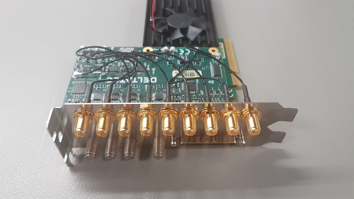Client
Eurostars is a joint programme co-funded from the national budgets of 36 Eurostars and by the European Union through Horizon 2020.

Partners
- MULTITEL asbl is a private, non-profit research centre, carrying out applied research and development activities for industry leaders, SMEs and spin-off companies. The centre is a strategic partner of the industry for the development of know-how and innovation in various technological fields including photonics, computer networks, speech, signal and image processing
- LLS ROWIAK LaserLabSolutions GmbH applies the innovative power of Femtosecond Laser Technology for laboratory devices in Life and Material Science. This Ultrafast Laser Technology as a tool for simultaneously processing and imaging of tissues closely is associated with the name LLS ROWIAK LaserLabSolutions.
- Laser Zentrum Hannover e.V. has carried out, for more than 25 years, research, development and consulting in the fields of laser technology, optics and photonics.
Project
MARS: Multi-photon Imaging based on an Adjustable ultrashort Raman shifted Source.
MARS targets the development of a novel three-photon fluorescence imaging system using femtosecond excitation in the wavelength range of 1.7 μm. The corresponding mode-locked fiber-based laser source and a sophisticated control and data acquisition system has been developed as well and integrated in a multi-photon microscope. Its overall optical capabilities have been investigated and deep tissue imaging on selected biological samples have been demonstrated.
In particular, DELTATEC has developed the data acquisition system of this multi-photon microscope.
Challenge(s)
The main challenges are:
- Elegant integration of the microscope electronics
- High data rates (up to 4 x 125 Mpixels / second)
- Low noise, high SNR analog to digital conversion
- System synchronization
Solution
DELTATEC has developed a custom IO board that makes the bridge between the microscope interfaces and the host computer. 
This IO board is interfaced with the host computer through the PCIe bus (8 lanes PCIe Gen3). The FPGA Ultrascale XCKU035 from Xilinx has been selected as the heart of the board.
On the other side, the following interfaces are provided to the microscope:
- 4 video analog inputs (14 bits, up to 125 Msps)
- Reference clock input for system synchronization
- Analog outputs for galva or resonant scanners control
- General purpose digital IOs.
The board is delivered with drivers and SDK in order to allow partners to develop the final microscope application. The SDK is compatible for Labview integration.
